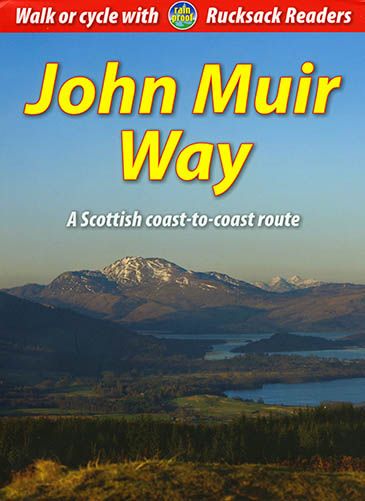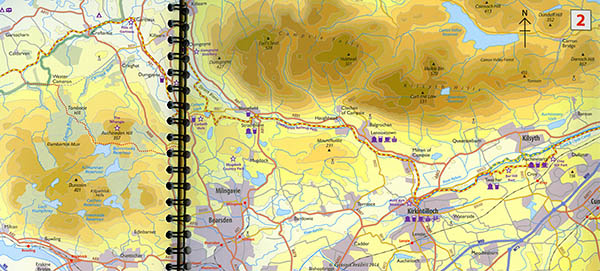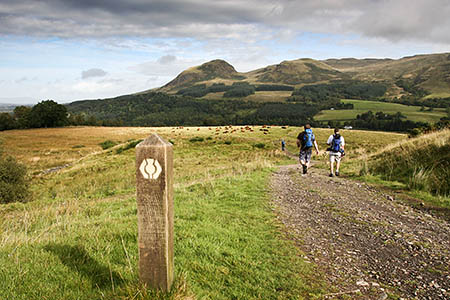Scotland’s newest long-distance trail is due to open on 21 April. First Minister Alex Salmond will attend the official event to mark the creation of the John Muir Trail, appropriately on John Muir Day, in whose honour the 215km (134-mile) route has been set up.
The trail starts at Helensburgh on the Firth of Clyde, and ends at the East Lothian town of Dunbar on the North Sea coast.
Rucksack Readers’ guide to the way, by Sandra Bardwell and Jacquetta Megarry, is a handy A5-sized book that also includes fold-out maps for walkers and cyclists undertaking the journey.
The authors point out that John Muir was a mountain man, and this route deliberately follows an easier low-level course from Scotland’s west to east coast, which perhaps would baffle him if he were alive today.
Bardwell and Megarry say the new John Muir Way is an ideal choice for anyone tackling their first long-distance route. It has few protracted climbs and is well waymarked.
The book has notes on Muir, the native of Dunbar and a man credited as the father of the national park movement.
The guide, illustrated throughout with colour photographs, also has background pieces on the two canals passed and the habitats and wildlife along the way.
It then details the John Muir Way, from West to East to take advantage of the likely prevailing wind, broken down into 10 sections for walkers, which the authors reckon will each equate to a day’s walking at a reasonable pace. It suggests cyclists will be able to complete the way in half the time.
The book is in an interesting ‘notebook’ vertical form, spiral bound and is printed on coated paper which should shed a shower or two.
Each step-by-step page of the route guide is clearly marked as either the cycling route or walking route, or where they combine. The pair also suggest an unofficial adventurous diversion on day two, making off around the forests close to The Wangie rather than using a largely asphalt route.
The John Muir Way passes the Falkirk Wheel, the Antonine Wall, Linlithgow Palace and Blackness Castle, as well as other notable sights, and the guide provides interesting facts on these points of interest.
The guide book also comes with a set of fold-out maps, in a style familiar to any users of Harvey Maps, though at an odd scale of 1:116,000. There’s probably just about enough detail to follow on these maps, combined with the comprehensive turn-by-turn instructions, particularly as the route is now waymarked.
Publishers Rucksack Readers also produce a separate companion map at a larger scale, 1:75,000 which presumably will be more detailed.
The John Muir Way is a nicely produced guidebook in a format that makes it easy to slip into your rucksack and can easily be consulted while on foot or on wheels.
Its information on planning the route, accommodation on the way and public transport links is comprehensive and there is plenty of extra background information both on Muir himself and on the places the trail passes through to enhance the journey.
There’s little to find fault with in this little guide, apart perhaps from the small scale of the maps, something that can be solved by forking out either for the Rucksack Readers map or perhaps OS mapping.
Anyone wanting to take the first steps on a multi-day long-distance trail will be well served by this guide.
The John Muir Way by Sandra Bardwell and Jacquetta Megarry is published by Rucksack Readers, priced £11.99. The companion sheet map costs £5.99.


